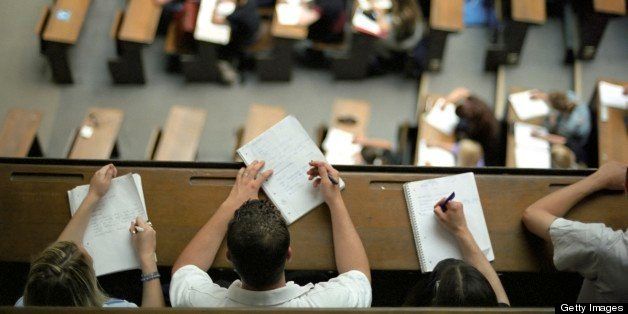
Caroline Hoxby and Christopher Avery's latest study examines an often overlooked student subgroup: low-income high-achievers. While this groundbreaking research has important implications for the recruitment practices of selective universities, we fear the conversation too often centers on a small, elite group of uber-achievers. Every school in America has its own group of high-achieving students and they represent the best hopes of their communities whether they attend a school in Harlem, a college town in Iowa, a remote fishing village in Alaska or a suburb here in the Silicon Forest. This group is rarely studied, but the educational opportunities that we offer these students, wherever they live, have profound implications for the future of their respective communities.
In an effort to better understand how well schools are serving their high achievers, our organization, the Kingsbury Center at Northwest Evaluation Association (NWEA) conducted a study, entitled A Level Playing Field: How College Readiness Standards Change the Accountability Game. We analyzed the growth of the top ten percent of students within their respective schools over three years in a large sample of 1,000 schools across the country. Our researchers hoped to see whether these high achievers were on track for college and whether those in high-poverty schools made the same growth as students in more affluent settings. In other words, we wanted to know whether the best students in high-poverty schools compete on "a level playing field."
The good news is that the vast majority of the top students in high-poverty schools were on track to be college ready. That bears repeating. In high-poverty schools, the best students are staying on course for college. That said, there remains an achievement gap -- 95 percent of students from low-poverty schools were on track to meet ACT college readiness benchmarks, compared to 85 percent of students from high-poverty schools.
The study also found that high achievers in high- and low-poverty schools showed nearly equivalent growth rates in reading and math, and the best of the high-poverty schools perform brilliantly. In fact, the 22 high-poverty elementary schools with the best growth rates entirely erased their achievement gap relative to the 27 low-poverty schools with the lowest growth rates. Students who are lucky enough to attend one of these high-growth schools get a great boost for their middle and high school years.
In the study's companion piece For Whom the Pell Tolls: How Financial Aid Policies Widen the Opportunity Gap, we see the likely financial impact of the gaps among the Level Playing Field's high achievers. Our researchers projected the performance of the sample's middle schoolers relative to the eligibility standards employed by several states that offer merit aid. We found that high-achieving students attending high-poverty schools had far lower rates of projected scholarship eligibility than the students attending low-poverty schools and that the gaps in eligibility were much larger in states that used higher ACT eligibility scores.
In South Carolina, a state with a relatively high eligibility score requirement, the eligibility gap between students from high- and low-poverty schools reached 30 percent. That gap means students who were generally on track for college in high-poverty schools were still projected to receive $5 million less in scholarship aid from the South Carolina program than students coming from low-poverty schools. Eligibility policies in many of these states offer fewer financial resources to the students that need them the most. That's unfair and unfortunate. A better policy would be to take the approach of states, such as Texas, that have expanded the definition of high performance beyond standardized test scores to include students who have established a record of strong academic performance relative to their peers in the school they attend.
America's history is a story of possibilities, of greatness that arises from modest circumstances. My own grandfather, who was born before the turn of the 20th Century, came from a poor family, graduated just from eighth grade and made a successful career as a licensed pharmacist in a small, mid-western town. He never set foot on a college campus, and didn't need to. That kind of success is no longer possible without a postsecondary education. The young people we studied, the top performers in their schools, represent the best of their respective communities and the elite of the next generation. They will be, if given the opportunity to achieve their full potential and become the pharmacists, attorneys, scientists, entrepreneurs and engineers who will see us through the 21st century. Let's not overlook them.